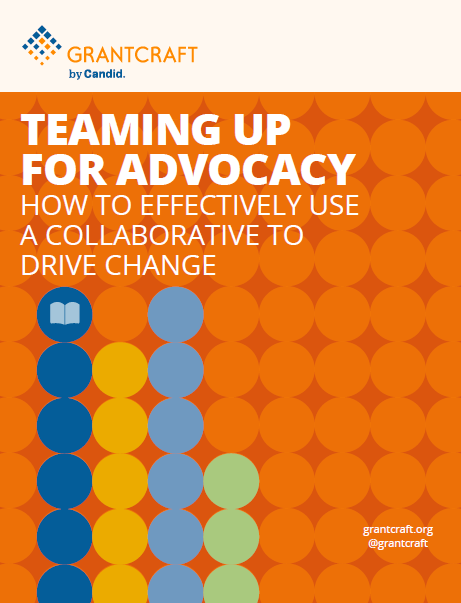Sticking Points: Personality Conflicts
From big mouths to big egos, personality conflicts can be a major factor in sinking a funder collaborative, but it’s often pushed aside because, well, it’s personal. As one funder notes: “Policy change is hard enough, but it gets even harder when there are really strong personalities involved, and they want to do it a particular way. Or it’s ‘their’ money and if they don’t get what they want, they don’t come back. Sometimes all of that doesn’t happen very elegantly, and that can lead to hard feelings.”
At the same time, strong and “distinct” personalities are often critical to imagining new solutions, leadership, and moving work forward. “Avoiding strong personalities isn’t the answer. Some of my favorite and most successful collaborators would have been barred!” The sticking point is not strong personalities themselves, but rather how various personalities are managed in a group setting. Ideally, personalities can complement one another to create a positive, collaborative, and forward-moving spirit. However, as we heard from many funders, that ideal can be challenging to achieve, and can have serious consequences.
Stories From the Real World
We had one funder in our collaborative who had very strong ideas about their theory of change being the ‘right’ one. While they were fighting with the rest of the group, our poor grantees were waiting like kids in the middle of a divorce who didn’t want to run afoul of the parents. Unfortunately, we couldn’t reconcile it. We continued to do our work, but not in alignment, which hurt our grantees.
We had to deal with some bullies at the table who hijacked the process, and everyone knew it was happening. These two funders hated each other, and it was always horrible when they got together.
So, how do funder policy collaboratives deal with this prickly issue?
- Push, push, push for open communication that ensures everyone is listened to and heard. That can be difficult because funders “don’t really like to be entirely honest with one another. We’re always looking at how our resources can be aligned or leveraged with others.” One way to get around that is to simply accept that consensus “isn’t usually feasible so just accept that and aim for good communication that provides clarity about where people are and where they want to go. So even if there are decisions made that some don’t agree with, they at last feel heard, and there’s less potential for conflict.”
- Get outside help. Sometimes just having a fresh set of eyes or, better, a person with mediation or facilitation skills in the room, can break up interpersonal logjams. “In our collaborative we had members whose need for credit would pop up continually. We decided to have some direct intervention with those folks, but we realized it’d be better to call in a facilitator to help. We put the issues on the table and talked about them. We had to deal with it. We couldn’t let it fester.”
- Build in opportunities for collaborative members to get to know one another as people, not just colleagues. Socializing in more relaxed settings is not just fun; it’s an important part of creating a collaborative culture. “Going out to dinner or lunch or having a drink after work gives colleagues the chance to kick back and have more honest and informal conversations that can really build authentic relationships. It’s especially important to do these things with new members so they feel welcome.” For a more formal activity that allows collaborators to connect, taking a personality or work-style quiz and sharing the results can be an interesting way to celebrate different approaches and begin to learn how different people in the group communicate best. Another recommends convening the collaborative over the course of two or more days because that allows for a “lot of socializing and time for chatting with other funders about things not on the agenda.” Yet another says that her group also invites “grantees or people outside our field to join us. By putting all these different groups of people together, we’re creating value because funders are getting to have the kinds of conversations they wouldn’t necessarily have with one another or other folks on their own.”
- Choose members carefully. Most funder collaboratives are donor supported, which means that fundraising and member cultivation will be part of the group’s work. That can sometimes lead to chasing the money, rather than assessing whether potential donors will actually be good partners. “Some people are better suited to be in a collaborative because they’re open to new ideas and are collegial. Our collaborative has some big heavy hitters who could swallow up the small funders in a second, but they don’t stand on ceremony. They see value in everyone at the table rather than sucking up a lot of room and air.”
Other groups aren’t so fortunate. “I was coordinating an advocacy collaborative that was going to involve someone who had a lot of money and cared about the issue. But it was clear he wasn’t going to be a good partner because he wanted a lot of say about what got done and how. If that happened, the other partners would lose control of the initiative. So, I asked the group: ‘We can invite that person to be part of the collaborative, but do we want to?’ They decided not to, but even if the decision had gone the other way, they realized it’s really important to think about who you want to be part of a collaborative.”
- Assess your own ability to be part of a collaborative and be honest about your limitations. Funders agree that unless you’re willing to let go of a fair amount of control, “you have no business being in a collaborative, which requires letting go of the need to drive your own agenda and realizing that the whole is greater than the sum of its parts.” Also, funders need to be transparent with the group when they’re caught between their institutions' desires and their own desires. “If you’re there to learn and that’s pretty much it, you need to put that on the table, especially if you’re going to be a hold out on other agendas. And if you’re holding out because of your institution, you need to say that too.” And, finally, there are the practical realities. Do funders have the time and energy, personally, to commit to this work?
- Prepare diligently for meetings. The more organized and prepared the collaborative’s leaders or its staff is before meetings, the less chance there is for misunderstanding. “The secret to minimizing conflict is going in and knowing what it’s going to look like. That means you have to talk to people beforehand, and people need to know what to expect. I have very focused conversations with each attendee before every meeting so they know what the docket looks like. I ask what their concerns are and try to address them, or at least, prepare them for disagreements.”
NOW REFLECT:
- How willing am I to set my own desires and ego aside to work in a larger group toward a common goal? How willing is my institution to share credit?
- How do I feel when personality conflict arises in a group? What could my colleagues and I do, individually, to help deal with conflict?
- Does our collaborative have a policy or understanding as to how we’ll determine when we need an external facilitator or some other kind of help to deal with conflict?
- How do we ensure that everyone’s voice is heard?
Please click here for information on GrantCraft’s methodology for this research.


